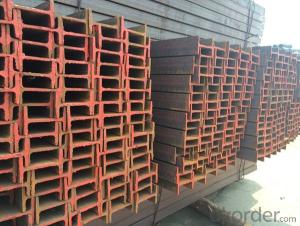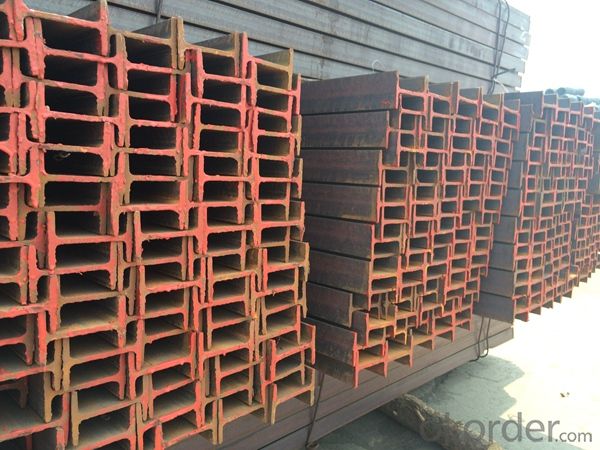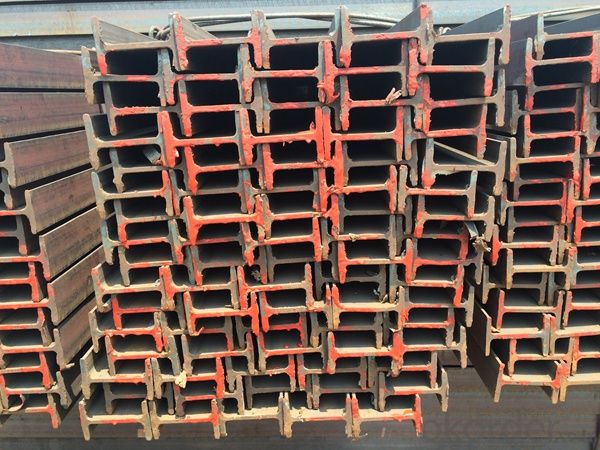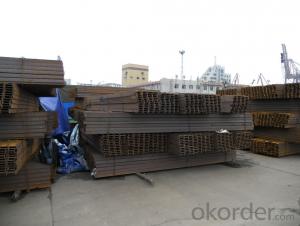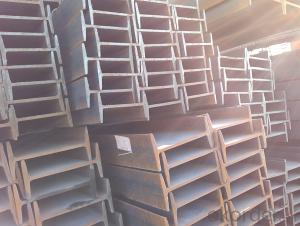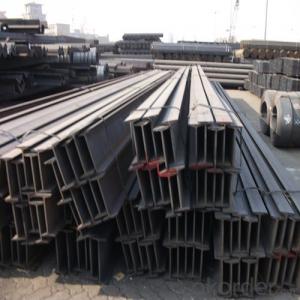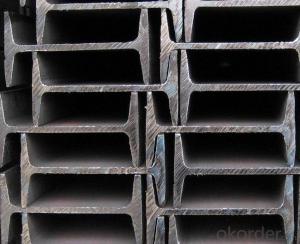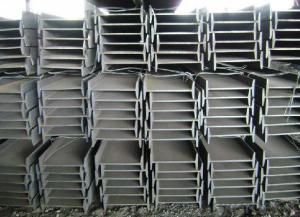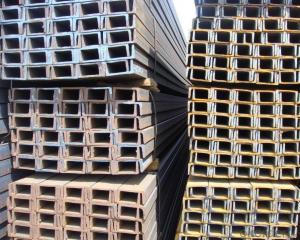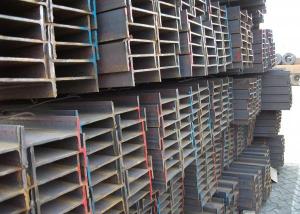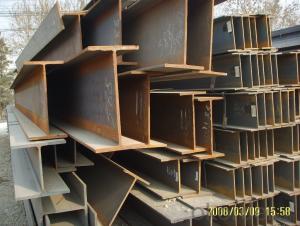IPEAA, IPE Beams of EN Production Standard Q235
- Loading Port:
- Tianjin
- Payment Terms:
- TT OR LC
- Min Order Qty:
- 25 m.t.
- Supply Capability:
- 200000 m.t./month
OKorder Service Pledge
OKorder Financial Service
You Might Also Like
Product Description:
OKorder is offering IPEAA, IPE Beams of EN Production Standard Q235 at great prices with worldwide shipping. Our supplier is a world-class manufacturer of steel, with our products utilized the world over. OKorder annually supplies products to European, North American and Asian markets. We provide quotations within 24 hours of receiving an inquiry and guarantee competitive prices.
Product Applications:
IPEAA, IPE Beams of EN Production Standard Q235 are ideal for structural applications and are widely used in the construction of buildings and bridges, and the manufacturing, petrochemical, and transportation industries.
1. Supporting members, most commonly in the house raising industry to strengthen timber bears under houses. Transmission line towers, etc
2. Prefabricated structure
3. Medium scale bridges
4. It is widely used in various building structures and engineering structures such as roof beams, bridges, transmission towers, hoisting machinery and transport machinery, ships, industrial furnaces, reaction tower, container frame and warehouse etc.
Product Advantages:
OKorder's Steel I-Beams are durable, strong, and resist corrosion.
Main Product Features:
· Premium quality
· Prompt delivery & seaworthy packing (30 days after receiving deposit)
· Corrosion resistance
· Can be recycled and reused
· Mill test certification
· Professional Service
· Competitive pricing
Product Specifications:
1. Product name: IPEAA, IPE Beams of EN Production Standard Q235
2. Standard: EN10025, GB Standard, ASTM, JIS etc.
3. Grade: Q235B, A36, S235JR, Q345, SS400 or other equivalent.
4. Length: 5.8M, 6M, 9M, 10M, 12M or as your requirements
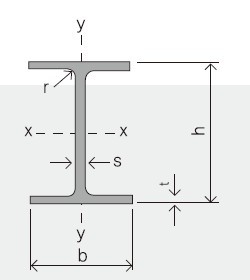
Section | Standard Sectional Dimensions(mm) | ||||
h | b | s | t | Mass Kg/m | |
IPE80 | 80 | 46 | 3.80 | 5.20 | 6.00 |
IPE100 | 100 | 55 | 4.10 | 5.70 | 8.10 |
IPE120 | 120 | 64 | 4.80 | 6.30 | 10.40 |
IPE140 | 140 | 73 | 4.70 | 6.90 | 12.90 |
IPE160 | 160 | 82 | 5.00 | 7.40 | 15.80 |
IPE180 | 180 | 91 | 5.30 | 8.00 | 18.80 |
IPE200 | 200 | 100 | 5.60 | 8.50 | 22.40 |
IPE220 | 220 | 110 | 5.90 | 9.20 | 26.20 |
IPE240 | 240 | 120 | 6.20 | 9.80 | 30.70 |
IPE270 | 270 | 135 | 6.60 | 10.20 | 36.10 |
IPEAA80 | 80 | 46 | 3.20 | 4.20 | 4.95 |
IPEAA100 | 100 | 55 | 3.60 | 4.50 | 6.72 |
IPEAA120 | 120 | 64 | 3.80 | 4.80 | 8.36 |
IPEAA140 | 140 | 73 | 3.80 | 5.20 | 10.05 |
IPEAA160 | 160 | 82 | 4.00 | 5.60 | 12.31 |
IPEAA180 | 180 | 91 | 4.30 | 6.50 | 15.40 |
IPEAA200 | 200 | 100 | 4.50 | 6.70 | 17.95 |
FAQ:
Q1: Why buy IPEAA, IPE Beams of EN Production Standard Q235 from OKorder.com?
A1: All products offered by OKorder.com are carefully selected from China's most reliable manufacturing enterprises. Through its ISO certifications, OKorder.com adheres to the highest standards and a commitment to supply chain safety and customer satisfaction.
Q2: How do we guarantee the quality of IPEAA, IPE Beams of EN Production Standard Q235?
A2: We have established an advanced quality management system which conducts strict quality tests at every step, from raw materials to the final product. At the same time, we provide extensive follow-up service assurances as required.
Q5: Can IPEAA, IPE Beams of EN Production Standard Q235 rust?
A5: Yes, but a little, but it dosen't afect the usage.
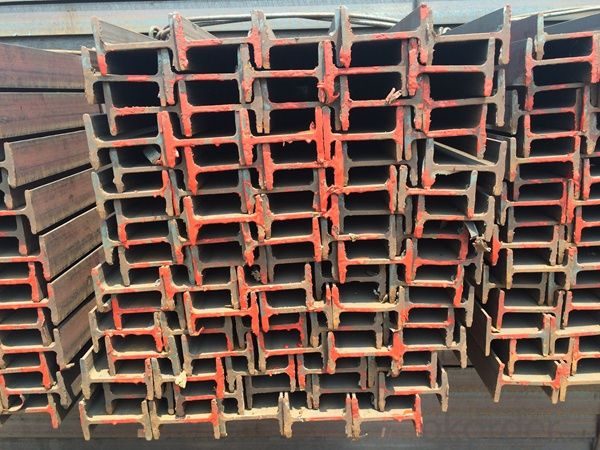
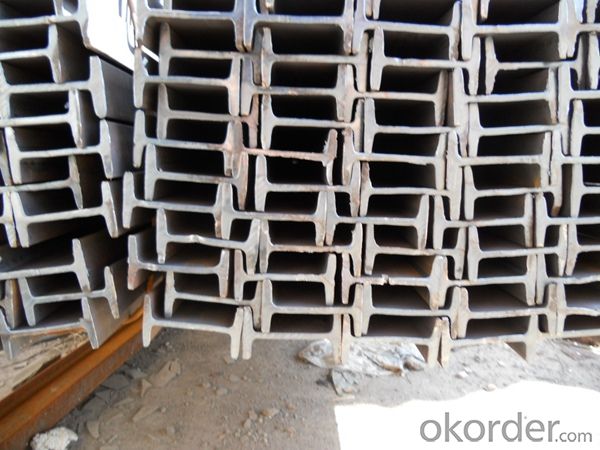
- Q: How do steel I-beams perform in seismic regions?
- Steel I-beams are widely recognized for their high strength and durability, making them a popular choice for construction in seismic regions. The performance of steel I-beams in seismic regions is generally excellent, as they possess several characteristics that make them well-suited to withstand earthquake forces. Firstly, steel I-beams have a high strength-to-weight ratio, meaning they can support heavy loads without being excessively heavy themselves. This is crucial in seismic regions, where buildings need to be designed to withstand lateral forces generated during an earthquake. The lightweight nature of steel I-beams allows for flexible and efficient structural systems that can better absorb and dissipate seismic energy. Secondly, steel is known for its ductility, which is the ability to undergo large deformations without losing its load-carrying capacity. In seismic regions, buildings must be able to absorb and dissipate the energy generated by ground shaking. Steel I-beams possess this ductility, allowing them to bend and yield under seismic forces, effectively dissipating the energy and preventing catastrophic failures. Additionally, steel I-beams can be designed to have excellent connection details, ensuring that they can effectively transfer forces between beams and columns. This is particularly important in seismic regions, where the connections between structural members need to be robust enough to resist the significant lateral forces generated during an earthquake. Furthermore, steel has a predictable and consistent material behavior, which allows for accurate analysis and design of structures in seismic regions. Engineers can utilize advanced computer modeling and simulation techniques to assess the performance of steel I-beams under seismic loads, ensuring their ability to withstand and safely dissipate the forces generated during an earthquake. In conclusion, steel I-beams perform exceptionally well in seismic regions due to their high strength-to-weight ratio, ductility, excellent connection details, and predictable material behavior. These characteristics make steel I-beams a reliable choice for constructing earthquake-resistant buildings. However, it is important to note that proper design, detailing, and construction techniques are crucial to ensure optimal performance of steel I-beams in seismic regions.
- Q: Can steel I-beams be used in retail or shopping center construction?
- Yes, steel I-beams can be used in retail or shopping center construction. Steel I-beams are commonly used in commercial construction projects due to their strength, durability, and versatility. They provide structural support for the building, allowing for larger open spaces and flexible design options. Additionally, steel I-beams are fire-resistant, which is an important safety feature in retail and shopping center construction. Overall, steel I-beams are an excellent choice for retail or shopping center construction due to their structural integrity and ability to meet the specific needs of these types of buildings.
- Q: Can Steel I-Beams be used for mezzanine storage?
- Yes, steel I-beams can be used for mezzanine storage. Steel I-beams are commonly used in construction for their strength and load-bearing capabilities. They are ideal for supporting heavy loads and can withstand the weight of a mezzanine structure and the items stored on it. The I-beams can be securely bolted or welded into place to provide a stable and sturdy base for the mezzanine floor. Additionally, steel I-beams can be customized to meet specific design requirements and can be easily integrated into existing structures. Overall, steel I-beams are a reliable and efficient choice for supporting mezzanine storage systems.
- Q: How is a steel I-beam manufactured?
- The process of manufacturing a steel I-beam involves a technique known as hot rolling, which includes heating and shaping a steel billet. The manufacturing procedure for a steel I-beam can be summarized as follows: 1. Raw materials: Commencing with the selection of high-quality raw materials, typically steel billets produced from recycled scrap metal. 2. Heating: The steel billet is subjected to heat in a furnace until it reaches a molten state, making it malleable and easy to shape. 3. Rolling: Once the steel billet has been heated, it undergoes a series of passes through rolling mills. These mills apply pressure to mold the steel into the desired I-beam profile. The rolling process consists of multiple passes, gradually reducing the thickness and increasing the length of the steel. 4. Cooling: After the rolling process, the steel I-beam is cooled to room temperature to stabilize its structure and prevent warping or deformations. 5. Cutting: The cooled steel I-beam is then cut into specific lengths according to the required dimensions using saws or flame cutting methods. 6. Surface treatment: Depending on the intended application, the steel I-beam may receive various surface treatments to enhance durability and aesthetics. These treatments may include galvanizing, painting, or the application of a protective coating. 7. Quality control: Throughout the manufacturing process, strict quality control measures are implemented to ensure that the I-beams meet the required standards and specifications. This includes inspecting the dimensions, mechanical properties, and visual appearance of each steel I-beam. 8. Packaging and shipping: Once the I-beams have passed the quality control tests, they are packaged and prepared for shipment to construction sites or steel suppliers. In conclusion, the manufacturing of a steel I-beam involves a combination of high-temperature processing, rolling, cutting, and quality control measures to create a robust and structurally sound product. This process allows for the production of I-beams in various sizes and lengths to meet the specific requirements of construction projects.
- Q: Are steel I-beams suitable for supporting heavy machinery and equipment?
- Yes, steel I-beams are suitable for supporting heavy machinery and equipment. Steel I-beams are known for their strength, durability, and load-bearing capabilities, making them an ideal choice for supporting heavy loads. They are designed to distribute weight across their length, providing stability and preventing structural failure. Additionally, steel I-beams can be customized and engineered to meet specific load requirements, ensuring the necessary strength and support for heavy machinery and equipment.
- Q: What are the different accessories or attachments used with steel I-beams?
- There are several accessories or attachments that are commonly used with steel I-beams to enhance their functionality and structural integrity. Some of these accessories include: 1. Beam clamps: These are used to attach the steel I-beams to other structural elements or support systems. Beam clamps come in various designs and sizes to accommodate different beam sizes and load requirements. 2. Beam connectors: These are connectors that join two or more steel I-beams together, creating a continuous beam. They are typically used in long-span applications or when additional strength is required. 3. Beam hangers: Beam hangers are used to suspend the steel I-beams from overhead structures or support systems. They provide a secure and reliable means of supporting the beams, especially in applications where there is limited space for support columns. 4. Lateral braces: Lateral braces are used to provide additional stability and prevent lateral movement of the steel I-beams. They are typically installed at regular intervals along the length of the beam and can be either welded or bolted to the beam. 5. End plates: End plates are used to connect the ends of steel I-beams to other structural elements or support systems. They are typically bolted or welded to the beam ends and provide a secure connection that can withstand high loads and forces. 6. Cleats: Cleats are small steel plates that are welded or bolted to the sides of the steel I-beams. They are used to provide additional support and prevent twisting or rotation of the beams under load. 7. Brackets: Brackets are used to support other components or fixtures that are attached to the steel I-beams. They can be either welded or bolted to the beams and are commonly used to support equipment, lighting fixtures, or other building systems. These accessories and attachments play a crucial role in ensuring the proper installation, support, and functionality of steel I-beams in various construction and structural applications.
- Q: How do Steel I-Beams perform in terms of fire resistance?
- Steel I-beams have excellent fire resistance properties. Due to the high melting point of steel, typically around 2,500°F (1,370°C), they can withstand high temperatures for an extended period without compromising their structural integrity. When exposed to fire, steel I-beams do not combust, melt, or warp easily, making them highly reliable in resisting the spread of fire within a building. Moreover, steel I-beams have low thermal conductivity, meaning they are not easily affected by heat transfer. This property allows the steel to maintain its strength and rigidity, even when exposed to intense heat. Additionally, steel I-beams are often protected with fire-resistant coatings or insulation materials to further enhance their fire resistance. It is important to note that although steel I-beams are highly fire-resistant, they can still be susceptible to thermal expansion. When exposed to extreme heat, steel expands, which may lead to structural distortions or failures if not properly accounted for in the building design. Therefore, it is crucial to incorporate appropriate fire protection measures and consider the potential effects of thermal expansion in the construction of steel I-beam structures. Overall, steel I-beams are considered a reliable and durable choice for fire resistance in construction. Their ability to withstand high temperatures and maintain their structural integrity makes them a preferred choice in buildings where fire safety is a priority.
- Q: How do steel I-beams perform in high wind areas?
- Steel I-beams perform well in high wind areas due to their strength and rigidity. Their structural integrity and ability to resist bending and twisting make them ideal for withstanding the forces exerted by strong winds. The design of I-beams allows for efficient load distribution, reducing the risk of structural failure or damage. Additionally, steel is a durable material that can withstand harsh weather conditions, including high winds, without compromising its performance.
- Q: Can steel I-beams be used in architectural designs requiring curved structures?
- Yes, steel I-beams can be used in architectural designs requiring curved structures. However, they may require special fabrication techniques, such as rolling or bending, in order to achieve the desired curved shape.
- Q: What are the different types of steel coatings used for I-beams?
- There are several different types of steel coatings that are commonly used for I-beams. These coatings are applied to the steel to provide protection against corrosion and enhance the durability and longevity of the beams. One of the most common types of steel coating used for I-beams is hot-dip galvanizing. This involves dipping the beams in a bath of molten zinc, which forms a protective layer on the surface of the steel. Hot-dip galvanizing provides excellent corrosion resistance and is particularly well-suited for outdoor applications or environments with high levels of moisture. Another type of steel coating used for I-beams is epoxy coating. This involves applying a layer of epoxy paint to the surface of the beams. Epoxy coatings provide a strong barrier against corrosion and can be customized to meet specific requirements, such as high chemical resistance or fire resistance. Zinc-rich paint coatings are also commonly used for I-beams. These coatings contain a high concentration of zinc particles, which provide cathodic protection to the steel. The zinc particles act as sacrificial anodes, corroding in place of the steel and extending its lifespan. In addition to these coatings, there are also thermal spray coatings, such as metallizing or flame spraying, which involve applying a layer of molten metal onto the surface of the beams. These coatings provide excellent protection against corrosion and can be tailored to meet specific performance requirements. Overall, the choice of steel coating for I-beams will depend on factors such as the desired level of corrosion resistance, the environmental conditions the beams will be exposed to, and any specific performance requirements. It is important to consult with a professional coating specialist to determine the most suitable coating for a particular application.
Send your message to us
IPEAA, IPE Beams of EN Production Standard Q235
- Loading Port:
- Tianjin
- Payment Terms:
- TT OR LC
- Min Order Qty:
- 25 m.t.
- Supply Capability:
- 200000 m.t./month
OKorder Service Pledge
OKorder Financial Service
Similar products
Hot products
Hot Searches
Related keywords
